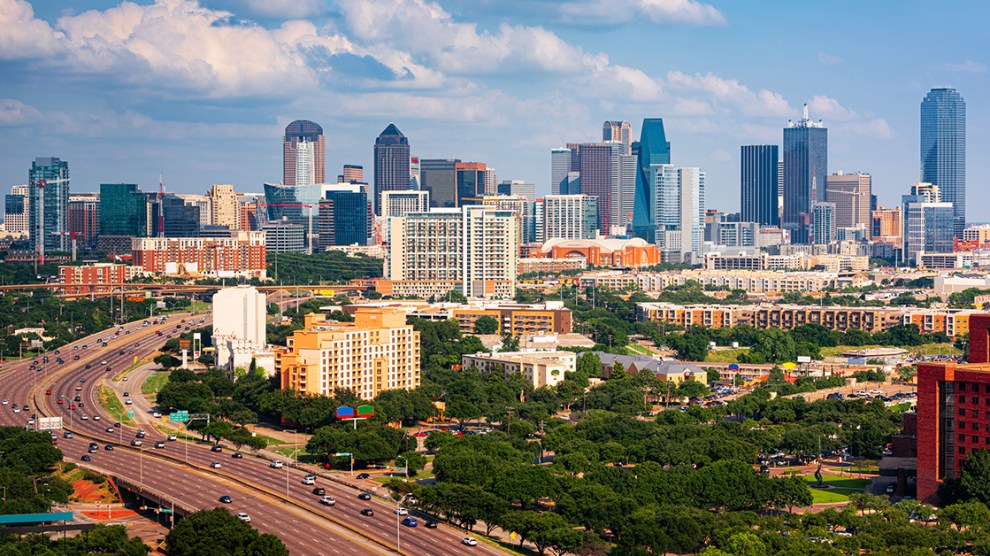Read the latest Yardi Matrix National Multifamily Market Report.
New Year, Same High Performance for the Multifamily Sector
In the middle of the winter seasonal slowdown, the national multifamily market continues to post exceptional performance.
Report highlights
- The new year begins with a 13.9% year-over-year increase in the average asking rent; chances for rent growth to remain as elevated throughout the year are slim.
- Occupancy remained at 96.1% in December, which translates into some 460,000 units absorbed in 2021.
- Lifestyle rents maintain lead over Renter-by-Necessity units.
- The single-family rental segment also had a good start in 2022, with SFR rents up 13.5% year-over-year through January and occupancy up 0.2% during the period.
In the Middle of the Winter Seasonal Slowdown, Multifamily Rents Buck the Deceleration Trend
The average national asking rent rose $8 to a new record of $1,604 in January. The softening trend in rents only lasted two months, as rent growth posted a 13.9% year-over-year increase in January, up 30 basis points over December. It’s expected that the rate will decrease as monthly gains decelerate compared to a year ago.
Growth in rent has accelerated during the pandemic, as the average U.S. asking rent rose to $1,600 from $1,500 in just seven months and to $1,500 from $1,400 in 10 months. It’s unlikely that rent growth will remain in the 13% growth range throughout 2022, but at this point it reflects lasting demand.
On an annual basis, rates increased by 20% or more in six of the top 31 metros and by 10% or more in 28. Miami, Phoenix and Orlando topped the rank and San Francisco (7.6%), Kansas City (7.2%) and the Twin Cities (5.0%) occupied the bottom positions.
Long-Term Rent Changes Remain Higher for Upscale Units; Occupancy Still Above 96%
Lifestyle apartments (16.5%) maintained the lead over Renter-by-Necessity units (11.5%). In New York the discrepancy between Lifestyle (22.2% year-over-year) and RBN (1.8%) rent growth is extreme and can be attributed to Manhattan’s rebound and the return of young workers—the borough was most affected by the pandemic but made a strong comeback since the spring of 2021. Moreover, Lifestyle apartments are less subjected to rent controls.
The occupancy rate in stabilized properties rose 1.3% year-over-year through December, to 96.1%. Last year, some 460,000 units were absorbed nationally, more than double the previous year and more than 50% above the previous annual high. Dallas and Houston led absorption last year, followed by Miami, New York, Chicago, Washington and Los Angeles, all of which absorbed 20,000 units or more. In fact, of the seven gateway markets, just one was below the 4.0% national average: New York clocked in at 3.8%.
In the Short-Term, Working-Class Units Lead in Rent Growth; The Tables Turn for Best- and Worst-Performing Metros
The national asking rent increased by 0.5% in January, a 40-basis-point increase above December. RBN rents (0.6%) outperformed the Lifestyle segment by 10 basis points.
Gains were led by San Jose, Baltimore and Los Angeles. Only two markets posted rents below pre-pandemic levels—San Jose and San Francisco—but here too a rebound is underway. Phoenix and Las Vegas—former leaders in rent growth—ranked near the bottom of the list (-0.1%).
Capital Markets Exhibit Strength; Multifamily Sales Mark an All-Time High in 2021
At the start of 2022, multifamily capital market conditions are robust, coming at the heels of record-high transaction volume and prices. Investors look for assets with strong fundamentals to deploy equity and debt into, and property owners want to exploit the record-low interest rates. Presently, the biggest factor standing in the way of a higher transaction activity is the number of sellers willing to put their properties on the market.
Multifamily sales totaled $198 billion in 2021, 55% more than 2019’s pre-pandemic high-threshold when $128.6 billion in assets traded, and more than double 2020’s total of $95.4 billion. The per-unit price reached $191,000 last year, more than 20% above the previous high of $157,000 in 2020. Freddie Mac anticipates that this year’s multifamily mortgage volume will reach $475 billion to $500 billion (up from $360 billion in 2020 and $450 billion in 2021).
Single-Family Rentals Captivate Investors
The asking rent growth for SFRs softened again but still marked a 13.5% year-over-year increase through January. Occupancy inched up 0.2% nationally during the period.
Ongoing pandemic measures keep demand strong in the sector. Although it’s still relatively small, the niche is increasingly attractive to investors. According to John Burns Real Estate Consulting, more than $50 billion of capital is competing for SFR investments. These funds amount to some 125,000 homes, the equivalent of 1% of the SFR market, and come from large institutions, as well as foreign capital, which signals a developing market.
Read the full Matrix Multifamily National Report-January 2022











Add Comment